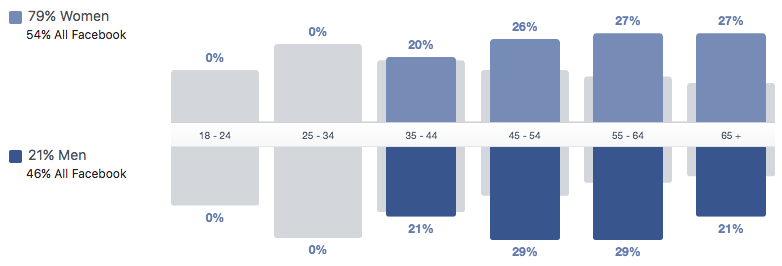
It’s no secret that Facebook is a powerful clinical trial recruitment engine – here’s what you need to know to design and launch your first campaign.
In recent years, Facebook has emerged as one of the most effective channels for clinical trial marketing and patient recruitment. Thanks to the social network’s astonishingly large reach and powerful targeting tools, clinical trials can reach an unprecedented number of potential patients in an incredibly time- and cost-efficient manner.
But if you’re new to Facebook’s advertising platform, you might need a little help getting started. While designing, launching, and managing multi-site recruitment campaigns requires a great deal of expertise and technical know-how, having a general sense of how the platform works can be incredibly helpful when discussing campaigns with your digital advertising team or vendor. We’ve put together a basic overview of the first five steps that are involved in setting up a new Facebook recruitment campaign.
1. Identify your goals
Every ad campaign needs a solid list of goals and objectives behind it, and Facebook is no exception. In order to ensure optimal outcomes, it’s best to have a solid definition of what success looks like at the outset.
Facebook lays out three categories for campaign goals: awareness, consideration, and conversion. Each of these goals are designed to help you appropriately target users as they reach different stages of their path to treatment. Depending on the scope and objectives of your trial, they may or may not be applicable.
The majority of active clinical trials will opt for conversion, which will enable you to track your success (and spend your budget) on qualified online referrals, rather than impressions or on-platform social actions.
2. Define your audience
Once you’ve chosen the objective of your campaign, the next step is defining your target audience. Let’s say you’re trying to reach early-stage Alzheimer’s patients and generate qualification appointments for an investigator site in Los Angeles, CA. How will you set your targeting parameters?

In this case, you know that the user location should be limited to Los Angeles. There’s a chance that early-stage Alzheimer’s patients will be looking for treatment information, but it will likely be their children or other members of their family who are ultimately making treatment decisions on their behalf. You’ll want to set the age of your audience to 35 and above in order to avoid paying for unwanted clicks being made by users who are too young, meaning they won’t likely be the one’s making those decisions.
Facebook’s Audience Insights feature can help clinical trials get even more granular, identifying interest areas and demographic data. By using this tool, the example Alzheimer’s trial can target people who have joined specific Alzheimer’s-related interest groups, or even determine the age and gender breakdown of their audience.


3. Decide where to run the ad
After you’ve narrowed your audience down, you need to decide where to run your ads. Clinical trials aren’t necessarily limited to Facebook’s platform – they can also display on Facebook-owned properties like Messenger and Instagram, which are great for reaching younger audiences, and on other properties within the Facebook Audience Network.
Whether trials take advantage of these features depends on the audience they’re trying to target. If you know that potential patients are heavy mobile users, Messenger and Instagram might make sense. If not, you might want to stick with the Facebook platform.
4. Set your budget
At this point, you’re probably wondering about the costs. Fortunately, Facebook makes it easy to control spending, allowing you to choose how much you want to spend overall, or defining how much you’re willing to pay per action. In addition, you can set limits on the daily or total spend, ensuring you don’t exceed your total marketing budget or blow through it in a matter of days.
However, the actual cost of an individual ad will highly depend on how valuable the viewer is, when and where the ad is placed, and a number of other factors. Our philosophy: don’t pay too much attention to each ad on its own, and focus instead on the bigger picture.
5. Design your ad
The last step before you publish is to design the ad for your clinical trial. Facebook allows you to choose from a number of ad formats, including photo, video, and carousel styles. The platform also has a special “lead” format to encourage users to click through, a feature that’s particularly useful in helping drive traffic to localized microsites and online screeners for further qualification.
When crafting your ads messaging and visual layout, you’ll need to take measures to ensure full IRB, FDA, and Facebook compliance. The good news is that once your ads are approved, you can turn them on and off, or scale your budget as needed, making it possible to keep things as cost efficient as possible.
Of course, this is just a small glimpse of Facebook’s massive potential as a patient recruitment engine. If you’re interested in learning more, download our white paper on Social Media for Clinical Trials, or get in touch with one of our experts today.





